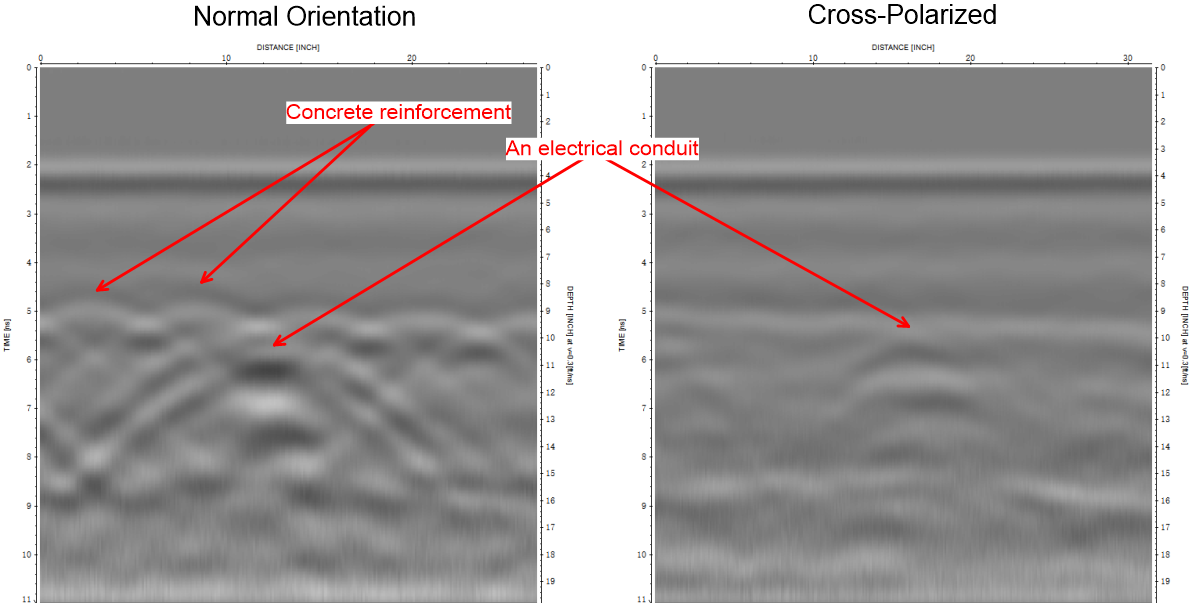Above is an image showing two concrete ground penetrating radar (GPR) scanning profiles along the same line with normal and cross-polarized antenna orientations, respectively.
Although the electrical conduit is visible in both profiles, it's easier to spot it in the cross-polarized profile than in the normal orientation profile. In the cross-polarized profile, the reinforcement's signature pretty much disappear; the conduit's signature also dials down, but remain very noticeable. So their differences are greatly amplified in the cross-polarized profile compared to the normal orientation profile. This tells us that the two signatures most likely represent two different objects, and it's most likely caused by the difference in their diameters. Of course, there are other possibilities such as differences in orientations or depths of the linear targets.
For locating utilities embedded in reinforced concrete, cross-polarized scanning is particularly helpful where the reinforcement pattern is erratic, especially where there are multiple layers or overlaps of reinforcement. Cross-polarized scanning could help to distinguish targets with different diameters, and it's especially helpful for amplifying differences between small-diameter metallic reinforcement and large-diameter plastic conduits. The image below shows a good example. A PVC conduit is hardly visible in the normal-orientation scanning due to strong signatures of metallic reinforcement, but it shows up much nicely in the cross-polarized scanning due to its much larger diameter compared to those of the reinforcement. Interestingly, the signatures of the metallic Q decking bottom don't change much from the normal orientation to the cross-polarized orientation. The reasoning would be its "diameter" is big enough (or it's flat enough), so practically it doesn't have a preferred orientation.

On a side note, it looks like cross polarization scanning is very sensitive to diameters of linear targets. It might be useful for estimating rebar diameters. A broad range of frequencies should probably be used since whether the rebar appear or disappear in a GPR profile should be closely related to the wavelength/frequency used. I doubt whether the estimation will be accurate enough for any practical engineering applications, but it's an interesting idea.




